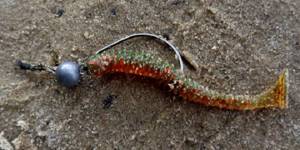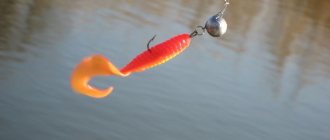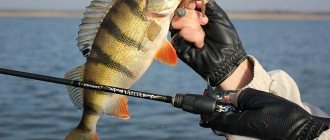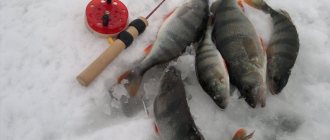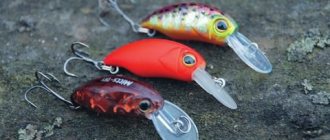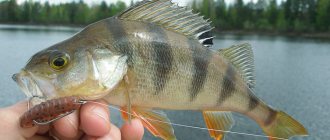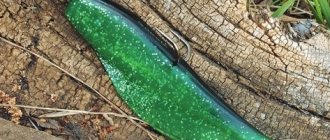Perch fishing is exciting fishing for an active predator that feeds on the fry of other fish species. The striped robber does not disdain crustaceans, insect larvae and frogs. This gives fishermen the opportunity to use various bait options, the main criterion of which is their active play. Perch rarely bites on passive baits and only bass (large perch) can attack them. It is about the varieties of baits that we will talk about. We have to find out which silicone is the most catchy for perch and consider the rating of “sailor” baits.
Varieties of silicone baits for perch
Silicone baits for perch can be divided into two types:
- Active;
- Passive.
Let's take a look at the best silicone lures for perch fishing.
Vibrotail
This type of bait imitates fry. If you perform the wiring correctly, then in the water it becomes like a wounded fish. This attracts the perch, forcing it to attack the prey. The artificial bait in question can be considered one of the catchiest baits when “hunting” for a striped predator.
Types of silicone for perch
Twister
The peculiarity of the edible twister is its hook-like tail. The ribbed shape of the body copies the caterpillar. Despite the unnatural shape of the silicone bait, it provokes a predator to attack and is no less catchy than a vibrotail. The twister can be equipped with an offset hook when “shooting” snags in the reservoir.
Worms
Bait that imitates a worm is often used when the fish is passive, attracting a predator. It does not have its own game, it only animates with slow wiring and shows good results.
crustaceans
The crustacean works well for perch. This is a kind of delicacy for striped robbers. The bait can be mounted:
- on a jig head;
- hinge;
- and without/knot connection.
Crustaceans are passive baits that can simply be dragged along the bottom or used aggressive twitching with a small step. Edible baits that resemble crustaceans attract mainly medium-sized (qualified) minke whales and trophy specimens. It’s very rare for small things to get hooked. Professionals and experienced fishermen advise taking bait measuring 2–3 cm, no more. Having information that there are trophy specimens in a given reservoir, you can use a crustacean 4 or 5 cm in size. In a word, experiment.
What to catch
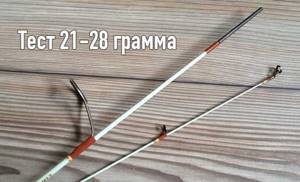
The weight of unloaded baits is only about 10-12 grams, but the tackle, despite this, must be strong. It must be said that sometimes up to 500 grams of unnecessary greenery is collected from the bottom, which significantly adds weight, so it will be problematic to pull out even a small pike.
It is best to use bass multiplier series of spinning rods, which have a test weight of 21 to 28 grams. Such rods are designed for this type of fishing, so they can withstand a certain weight. The length of the element should be from 2.1 meters to 2.3 meters.
The spinning rod should ideally be such that, after hooking, you can safely deliver your fish to the shore and not get caught on snags, get tangled in plants, or collect all the greenery from the bottom along the way. If this does not happen, then the fish will probably get away or simply break the line.
If you don’t want to use “multi”, it is recommended to pay attention to fashionable options, including the option for twitching, where there is an excellent reel with a size of 3000-4000.
As for fishing line, it is advisable to use cord. Although experienced fishermen often resort to fluorocarbon. True, in this case their fishing takes place within twenty meters. In this case, the elongation is the smallest.
Important! Fluorocarbon is a wear-resistant material, which is why many anglers prefer it.
Although, if you can’t buy one or just don’t want to, then a cord will do. As for the diameter, the cord has this mark, according to the Japanese numbering PE 1.5-2.0, and for fluorocarbon it is optional. This can be a cross section of up to 2.5 or up to 3.5.

Particular attention is also paid to the choice of leashes. They should be such that ideally they do not collect grass, and if they do collect it, then in the most minimal quantities. This is possible due to the absence of protruding fasteners.
Leashes made of string show good results. True, some fishermen complain that the element clings to dense grass and bends, and this sometimes leads to the fact that the part cannot be straightened and has to be thrown away.
If desired, it is possible to use fluorocarbon with a cross-section from 0.5 to 0.6 mm. True, after each bite you should definitely check it and see if any burrs have appeared. If such were noticed, then the element needs to be changed.
What determines the catchability of silicone?
Today, we can confidently say that the catchability of silicone baits for perch depends on such factors as:
- color;
- size;
- form;
- smell.
In specialized fishing stores, you can purchase silicone for perch in different colors and aroma. Let's look at each option presented above and determine the specific factor that influences the final result of fishing for a striped predator.
Color

Catching perch with silicone allows you to experiment with the colors of artificial bait. For example, in spring, bright colors are most often effective:
- salad green;
- carrot;
- pink;
- yellow.
In summer, dark, muted colors work well:
- "Machine oil". Brown color with a green tint;
- Dark purple version;
- Or traditional, black color;
- Lures with glitter.
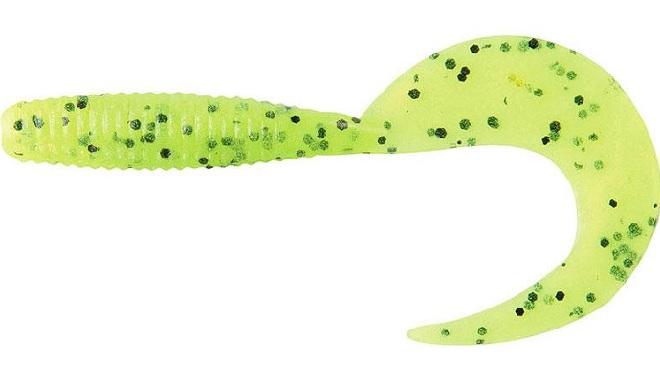
At the first autumn cold snap, you can go:
- For edible translucent artificial baits made of silicone.
- Often, anglers use white baits, to which the predator actively reacts.
- In the fall, you can safely take white baits in combination with red inserts for fishing.
Important! Again, this is not an instruction for use, but just an option. It is necessary to constantly experiment, use different shapes and colors of bait. Only in this case, fishing will end with a positive result - catching a perch.
Smell
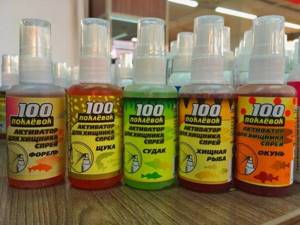
This is another effective weapon that provokes the striped robber to attack the bait. You can buy nozzles already impregnated with a certain smell, or purchase aerosol sprays. At home, it is not difficult to give silicone a smell. It is necessary to process the bait:
- meat;
- fish;
- shrimp oil;
- liver extract.
Important! Scented baits increase the catchability of both active and passive predators.
Fishing technique
You can catch perch with edible rubber in the winter purposefully using just such equipment, or simply have it in stock as one of the options. Only practice on a pond will tell you what is best to use and how.
As we have already said, catching perch with edible rubber in winter does not require any special equipment. For heavy silicones we use winter trolling techniques, for small ones we use jig play. It is better to have several pre-made equipment in stock. For example, a large twister on a Cheburashka, a tandem of a large jig with rubber and a provocateur above with a small silicone crustacean. It wouldn’t hurt to try out a sliding version of a hook freely falling along the fishing line with a sinker at the end.
Subscribe to the channel:
My YouTube channel RYBAFAN on fishing:
We're OK
Edible and inedible silicone
The pioneers in the use of edible twisters were sports fishermen. The fish may not completely swallow the edible bait, but only try it. The fisherman's patience and reaction are important here.
Inedible silicone requires immediate cutting. The perch can simply spit out the silicone: you can’t hesitate. Therefore, most pros and amateurs are actively switching to edible silicone baits, which open up a wide field for experimentation.
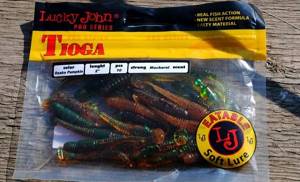
Lucky John Tioga is considered a favorite among edible baits . The stores have a large selection of edible materials of different shapes and sizes. This bait is recommended for beginning amateur fishermen. In addition, these slugs do not harm the reservoir and are safe for fish. The catchability of vibrotails is determined by their shape. Once in the water, the artificial bait creates frequency vibrations, provoking the predator to attack. Even a passive perch cannot resist this edible dessert. In addition, if the first attack is unsuccessful, the predator can make a second attack.
How to increase the effectiveness of silicone baits
The effectiveness of fishing depends on the quality of the silicone. Experts recommend using flavoring agents and adding brightness and color to increase the catch. Let's look at the effectiveness of applying stripes and specks, as well as the use of glitter.
Stripes and specks
If translucent light baits are used, then in the tail part of the silicone and back, it is recommended to apply chaotic lines and specks. This is done with a regular felt-tip pen.

Shine
Shiny baits attract predators, causing them to react to the shine. If there is no option on sale that suits you, you can do the coloring yourself. Nail polish with glitter is suitable for these purposes. The rubber can be covered in one tone or its individual parts can be highlighted with a bright color.
Often fishermen throw away spoiled bait: the perch bites off the tip of the rubber when attacking. You can build a non-standard object from two halves. The algorithm of actions is as follows:
- the edges of two parts of silicone are heated over a candle;
- pressed tightly against each other.
One of the non-standard solutions, as practice has shown, is a hybrid of bait and wobbler. This combination will provide a bite on any body of water.
Rating of silicone baits for perch
The rating of catchable baits includes:
- twisters;
- vibrotails;
- slugs.
The most famous and promoted brands:
- Lucky John;
- Ukrainian Fanatik;
- Relax.
Today we will focus on silicone vibrating tails:
- Boxer 3.5 from Fanatik . Lures made from edible silicone. You can choose different colors.
- Ponton 21 Awaruna . Jig baits with high quality action. Vibrations are transmitted to the entire surface.
- Bugsy shad Lucky John . The rubber works when the minke whale refuses to feed and behaves passively.
- Swing impact . This is an oblong ribbed rubber. The tail plays actively during any retrieve.
- Tioga Lucky John . An interesting bait option, which, thanks to its elongated tail, provokes striped bass to attack even in remote places.
Equipment for fishing with silicone
There are approximately 10 most common equipment options, “tailored” to different quiet hunting conditions and wiring techniques. The following fastening methods are considered to be working and most effective:
- jig head;
- hinged design;
- diverter leash;
- drop shot;
- tyrrett;
- Texas rig option;
- Carolina rig;
- split shot.
It would be unfair to just name the types of equipment. Therefore, we will look in more detail at each of the presented types of equipment for catching a predator.
Jig head

This type of fastening is considered a fishing classic. She is favored by experienced fishermen and “first-graders”. The head weight is aggregated with a fixed hook. In stores you can buy jig heads weighing from 1 to 10 grams with hooks of various sizes. The jig head can be of different shapes, such as:
- ellipse;
- hoof;
- ball.
There are other options.
Hinged design
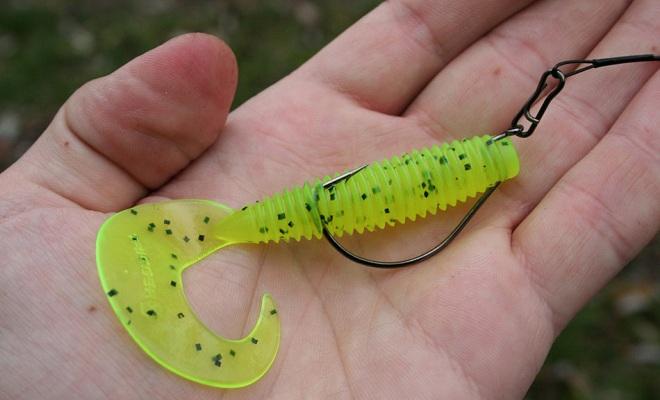
This option involves using:
- head weight;
- offset hook.
It is possible to use a double or tee. The difference is that the weight has two eyes: one for an offset hook, the second for a leash with the main fishing line or cord. In this design, edible twisters are constantly in motion with active oscillation. The effectiveness of twisters and vibrating tails on a hinged structure has been confirmed by practice. This type of equipment is suitable for attaching passive worms.
Retractable leash
This option uses:
- main line;
- weight;
- additional leash with bait.
If it is necessary to feed light bait over a long distance, a retractable leash is recommended. Feature: the weight controls and does not allow the silicone to move out of the biting zone. This is important if perch fishing takes place in the current.
Drop shot
The design of this equipment is similar to the previously considered option: a diverter leash. As you can see, in the picture the baited hook is attached to the main fishing line or cord. The weight is located at the bottom of the structure.
Tyrrett
Tirette works effectively in snarled areas, at the bottom of a reservoir. Sinker, shaped like a plow.
Texas rig option
A modernized version of equipment for catching predators in snags. The bait is attached to an offset hook. A weight is put on the main fishing line or cord, which can be made in the form of a bullet with two through holes at the edges. Behind it is a bead that protects the hook knot. Feature: the load moves freely along the fishing line.
Carolina rig
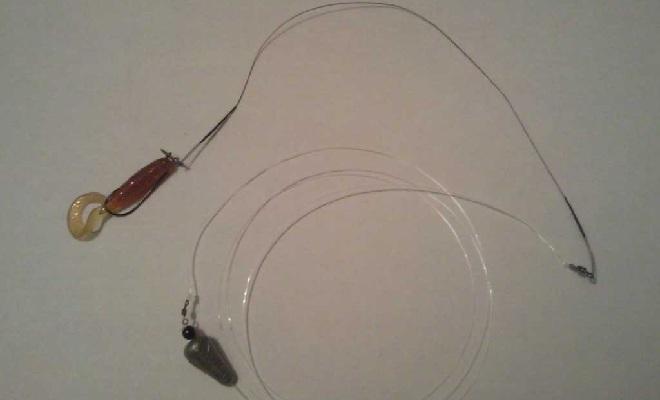
This is not a separate species, as many people mistakenly believe, but a variety of the Texas variant. In this case, as shown in the figure, the hook with a silicone nozzle is located on a separate leash.
Split shot
Equipment is necessary when fishing for stripers at shallow depths. The silicone is on the main line. And at a distance of 300–400 mm, as shown in the figure, a float pellet is located on top.
Microjig
Despite the increased attention of fish to large baits, catching perch with a microjig in the fall continues to remain relevant. Here and there the striped fish likes to take small baits. This type of tackle also works better on passive fish, due to the lightness of the equipment and the sensitivity of the rod. Light nipping may not be visible on an average spinning rod. For microjigging for perch in the fall, the same types of baits and rigs are used, only in a smaller caliber.
